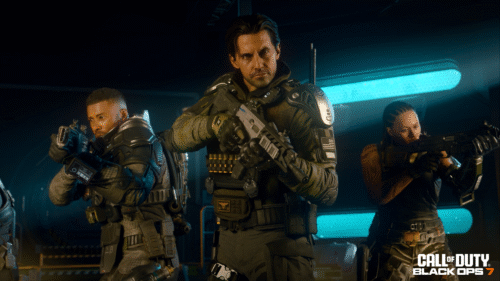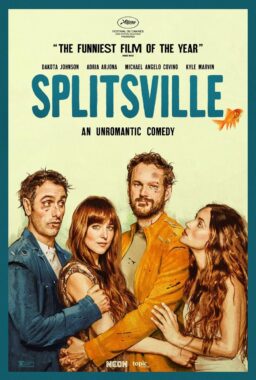The “Saints Row” games have always been about chaos. From the first game, released in 2006, to the fourth, dropped in 2013, these games were like the punk rock younger brother of the “Grand Theft Auto” series. In B-movie terms, “GTA” was the blockbuster Hollywood franchise, and the “Saints Row” games were the weirder indie movie version, produced without the same concerns for taste, character, or logic. They are gleefully insane games, and admittedly a bit “dudebro” in their aesthetic, often centering macho white guys who cross every single problematic line of good taste. It felt like the old “Saints Row” couldn’t really exist in the current gaming world.
So when trailers for the new game were released, no one was really surprised to see diversity come to this franchise with a story of a culturally varied group of young people trying to claim power in the fictional city of Santo Ileso. And some of the best elements of “Saints Row” center the difficult existence of twentysomethings in the ‘20s, building missions around side hustles and, really, self-employment. While the concepts behind “Saints Row” are rich, the execution is another matter. This is a deeply glitchy game that is too often repetitive when it’s working too. Too much of “Saints Row” is rushed, offering deep customization when it comes to character but too little depth in terms of storytelling, mission design, and even gameplay mechanics. While it’s nice to have this rebellious franchise back in the mix, it’s going to take a sequel for it to really matter again.
Your character in “Saints Row” is entirely your own right from the beginning as the game opens with an intensely varied character customizer, allowing you to design a protagonist from scratch. After you build an anti-hero, you thrust him or her out into the world of Santo Ileso, which looks vaguely like a futuristic Las Vegas, complete with a large central area surrounded by a dangerous desert landscape. Santo Ileso is in the middle of a gang conflict between two groups—Los Panteros and The Idols—and overseen by a privately run authority known as the Marshall Defense Industries. (You will kill literally hundreds of all three groups.)

“The Boss,” as your character is known, starts off working for the Marshalls, who open the game with an intense and awesome mission in which you lead the way to the apprehension of a notorious criminal named the Nahualli. Of course, The Boss isn’t one to take orders well, leading to expulsion from the Marshalls. It turns out you’re not alone in your dissatisfaction with the struggle of life in Santo Ileso, and you end up partnering with a former Pantero named Neenah, a former Idol named Kevin, and a BFF named Eli to start your own gang, The Saints, of course, with the goal of taking over the entire city.
A traditional story mission structure in “Saints Row” is accentuated with the literal building of an empire. As you earn money through missions, you can build business operations around Santo Ileso, which basically unlock side missions to make them more profitable. For example, a laundromat disguises a criminal clean-up crew, opening side missions in which you have to dispose of bodies in car trunks. Completing side missions leads to literal cash rewards but also can raise the intake of your empire overall. What do you spend your money on? More operations, cool car upgrades, and an overwhelming amount of clothing options. There are stores throughout Santo Ileso where you can buy new gear to make your boss feel completely your own.
Sounds fun, right? It is in theory. And at times in actuality. However, the first thing one notices is that “Saints Row” looks clunky. It’s barely more visually accomplished than the last “Saints Row” game nine years ago with some choppy character movement and downright goofy physics. The shooter aspects are woefully unrefined—the game promises a dense loadout of weapons, but you really only need two to get the job done for most missions—and the extra combat elements are so inconsistent they become annoying. You unlock special skills like grenades or a giant flaming fist, but half of them are difficult to use in actual combat. It’s a game that constantly appears to be giving you a range of battle options, but you’re really going to point and shoot your pistol.

And that sense that this is a game that looks deep when it’s actually just cluttered extends to the mission design too. You will do the same things over and over again in “Saints Row,” and likely ignore a majority of the empire-building side missions. Yes, open-world games like this are often repetitive, but there’s too little ambition in the design and screenwriting in “Saints Row.” And so much of the management of this game is silly, breaking up a lot of what you need to do into a menu screen that replicates phone apps that can are a chore to manage. Putting together a gang empire to run a major city shouldn’t feel like a job. And don’t get me started on the fact that, at least at launch, this game is broken. There are more glitches across Santo Ileso than enemies.
“Saints Row” is more frustrating because of how easy it is to see the more refined, smarter game buried within it. The character dialogue between The Boss and the other members can be sharp; the embracing of smart phone and social media culture feels current; the quirky sense of humor in the customization can be wonderful—at one point, I was wearing skeleton face paint and a hot dog hat into combat. There’s something refreshing about a major game that doesn’t take itself so seriously, and I miss when open world games could just be goofy. The truth is that making successful games that feel like chaos actually takes a lot of control on the part of the developers and designers. And that’s where something got disconnected in this reboot, which wants to explode gaming conventions in a modern way but falls victim to its own excess.
A PS5 review copy was provided by the publisher.












